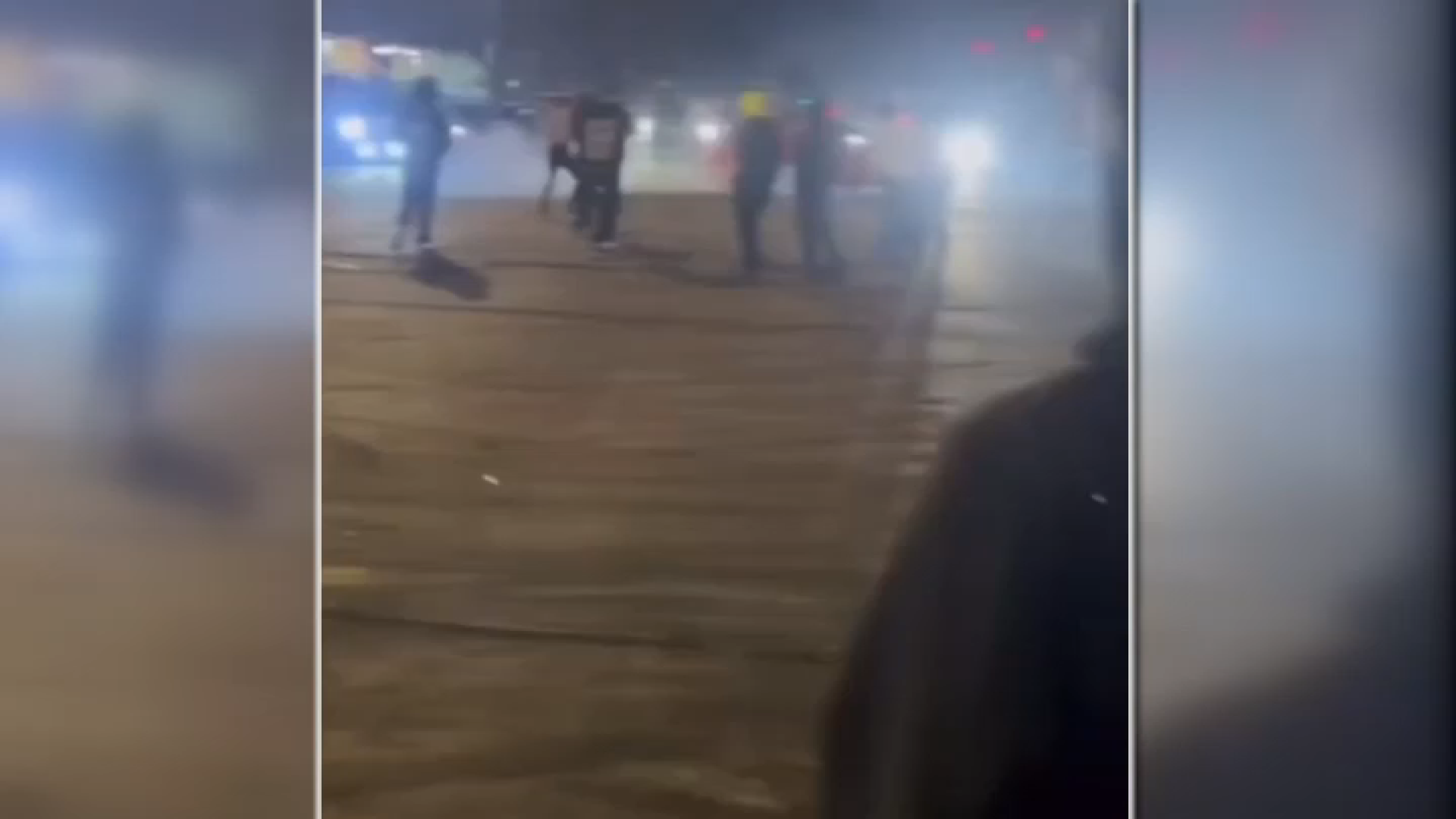Déjà vu squared.
Neighborhoods in the Beverly Grove area of Los Angeles are recovering from a series of broken water mains that flooded streets — four in four days, the most recent Wednesday on Crescent Heights Blvd. just south of Melrose Avenue.
"It's like, 'how many more?'" said florist Nicole Vogel.
"We don't know what's going on," said Chastity Irizarry, proprietor of the PR firm Tipsntrends, who could look out her window and watch a Department of Water and Power (DWP) crew at work. "We do know we are concerned."
Here's the timeline of the breaks:
- Sunday, 1133 N. Formosa Ave.
- Monday, 8300 W. Fourth St.
- Tuesday, 8347 Blackburn Ave.
- Wednesday, 6700 N. Crescent Heights Blvd.
That the four breaks occurred within a square mile is only a "coincidence," said Breonia Lindsey, Assistant Director for the DWP's Water Distribution Division. There did not appear to be a common cause, other than deterioration of pipes nearly a century old.
"Our system is aging," Lindsey said, noting that the failed pipes dated to 1922 and 1925.
Modernizing hundreds of miles of the DWP's most vulnerable pipes in the next decade is projected to cost more than one billion dollars, with funding yet to be determined.
As it is, on average, DWP responds to three mains that have begun leaking — or worse — every day, but that's one-third fewer than a decade ago, said Lindsey.
News
Top news of the day
DWP calculates 3.5 percent of the water in its system is lost to leakage, and another 1.7 percent to evaporation and other causes. That 5.2 percent total loss is at the low end for water systems, Lindsey said. But it's enough to provide the water needs of 50,000 households a year — all of whom, of course, are being asked to conserve during the current drought.
A surge in main failures, including the spectacular "blowout" of a major 64-inch diameter trunk line beneath Coldwater Canyon, occurred in the summer of 2009, after Los Angeles had taken steps to deal with drought.
"We found a connection with water conservation — unintended," said Jean-Pierre Bardet, Ph.D., a civil engineering professor who headed the panel of experts appointed to investigate.
The panel found that a restriction on yard watering inadvertently put stress on the water system. Restricting yard watering to the same two days citywide, Tuesday and Thursday, produced fluctuations in water pressure.
In 2010, the city took the panel's recommendation to refashion the yard watering restriction, switching to the current odd-even system that spreads out watering over six days.
That was the short-term fix, Bardet recalled. For the long term, the panel recommended the DWP adopt an "aggressive program" to detect leaks and prepare them before pipe collapse, and to replace the old generation cast iron pipes with modern materials less susceptible to corrosion.
DWP currently has twenty crews assigned to look for leaks, and a separate team that uses electronic monitoring of selected pipes to detect sonic evidence of an emerging hole or crack, Lindsey said.
Then at USC, Prof. Bardet now directs the Urban Water Institute at the University of Texas at Arlington. From more than a thousand miles away, Bardet said he was not prepared to speculate on particular circumstances in the Beverly Grove pipe failures, other than pointing to LA's aging infrastructure.
"It doesn't take much for a system like that to experience rashes of failures," said Bardet.



